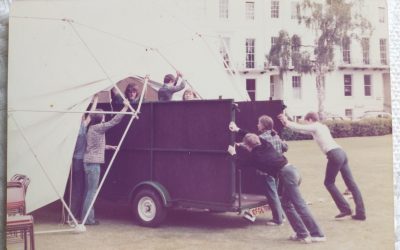An interesting discussion with the NZ Trio who are visiting London this week from their native New Zealand. We were talking about the challenge of performing some of the very long works in the trio repertoire, such as the Schubert trios (40-50 minutes). Many of our standard three- or four-movement works are 30 minutes long. In contrast, many contemporary works for piano trio (of which the NZ Trio have a lot in their repertoire) are shorter and more immediate in character – often spiky, upbeat, energetic, jazzy and striking. After concerts, audiences often comment on these pieces rather than on the longer classics. But what does this mean? We talked about that in the context of a society where we’ve all got used to music of ‘soundbite’ length. There are so many competing claims for our attention all day long. There’s a feeling that only something of clearly-defined character, something possible to grasp immediately, has a chance of cutting through the clamour. On the other hand, most musicians are chiefly interested in presenting the longer works that they mull over for ages and have loved for years. These works, by Beethoven and Schubert and Schumann and so on, don’t yield their secrets immediately and are not easy to sum up in a post-concert chat. Perhaps that’s why people don’t try. But the fact that they choose to comment on the cheerful nuggets of modern music probably doesn’t mean that they were indifferent to the lovely longer works of the past, just that these works don’t lend themselves to soundbites of comment.
Elite athletes and what we musicians can learn from watching them
I'm enjoying the lull between major sports events - the Euros Football Tournament and the Wimbledon Tennis Championships just passed,...




I’ve had similar experiences. I think part of the explanation is that audience members are pleasantly surprised when they first hear a piece–I’ve had this reaction to some of the short 20th century works like Copland’s “Vitebsk” and David Amram’s “Dirge and Variations,” but also to Arensky D minor and the Clara Schumann Trio. Maybe the thinking is that there’s nothing very original to say about Schubert or Brahms, or about the decision to program them; people may also be comparing the performance they’ve just heard with a beloved recording, and politeness forbids them to say, “You guys sounded good, but I’ve got the Gilels-Kogan-Rostropovich version at home, and…” But if you’ve just introduced them to the Taneyev or one of the Saint-Saëns, they want to thank you for a new experience that doesn’t also compare disappointingly with an old favorite.
I’ve had some funny experiences of playing, say, a late Schubert sonata in the same programme as some light-hearted 1930s salon pieces by Billy Mayerl. Most people say how much they enjoyed the Mayerl! I guess it also shows the need for skilful programming, so that important things are not overshadowed.
I hadn’t heard of Mayerl–thanks for a discovery. “Marigold” would make a good music track for one of those Francis Iles tales of suburban murder like Malice Aforethought, all lawn tennis and discreet poisonings.
I’m a fan of that Amram piece which he wrote at Marboro in 1953 for a trio that included David Soyer. The theme is stated by the cello and is marked “Soyerissimo.”
I haven’t heard of that piece. I’ll see if I can track it down!
I love the idea of dynamics named after particular people, eg ‘Soyerissimo’. I can think of a few other examples….